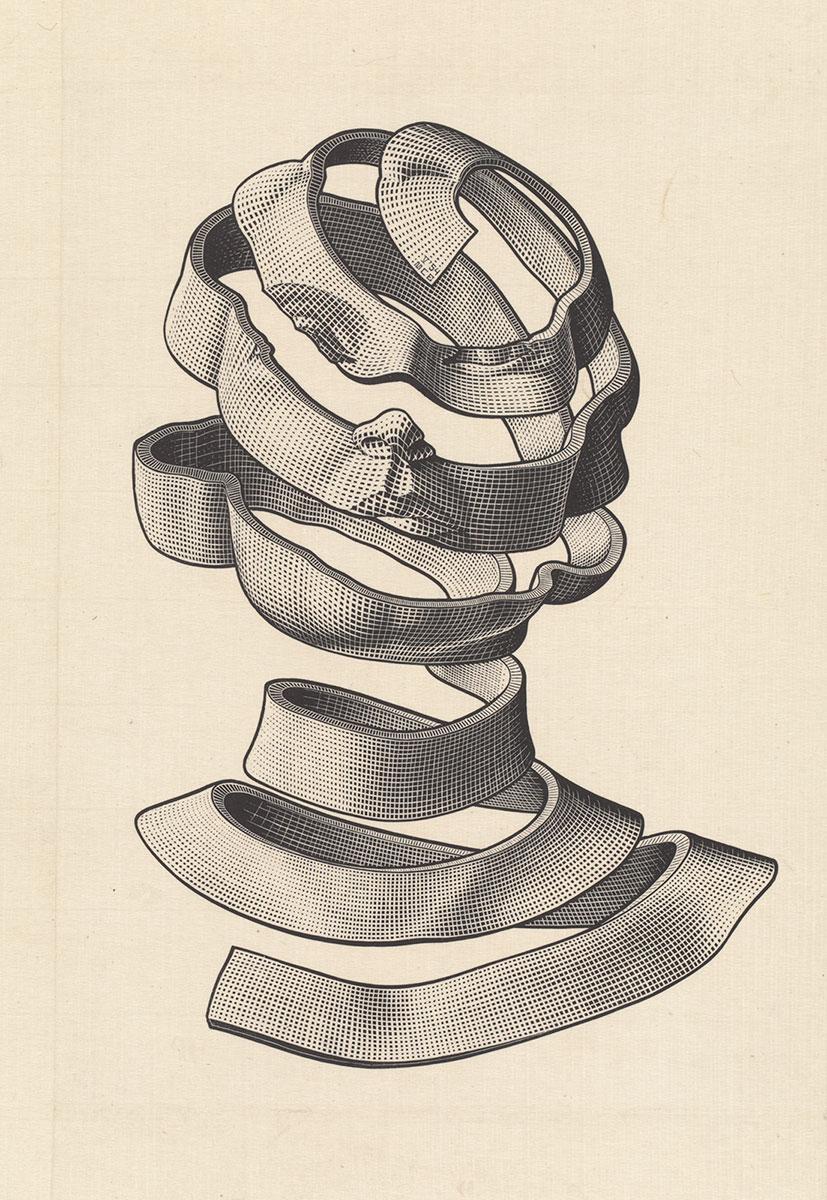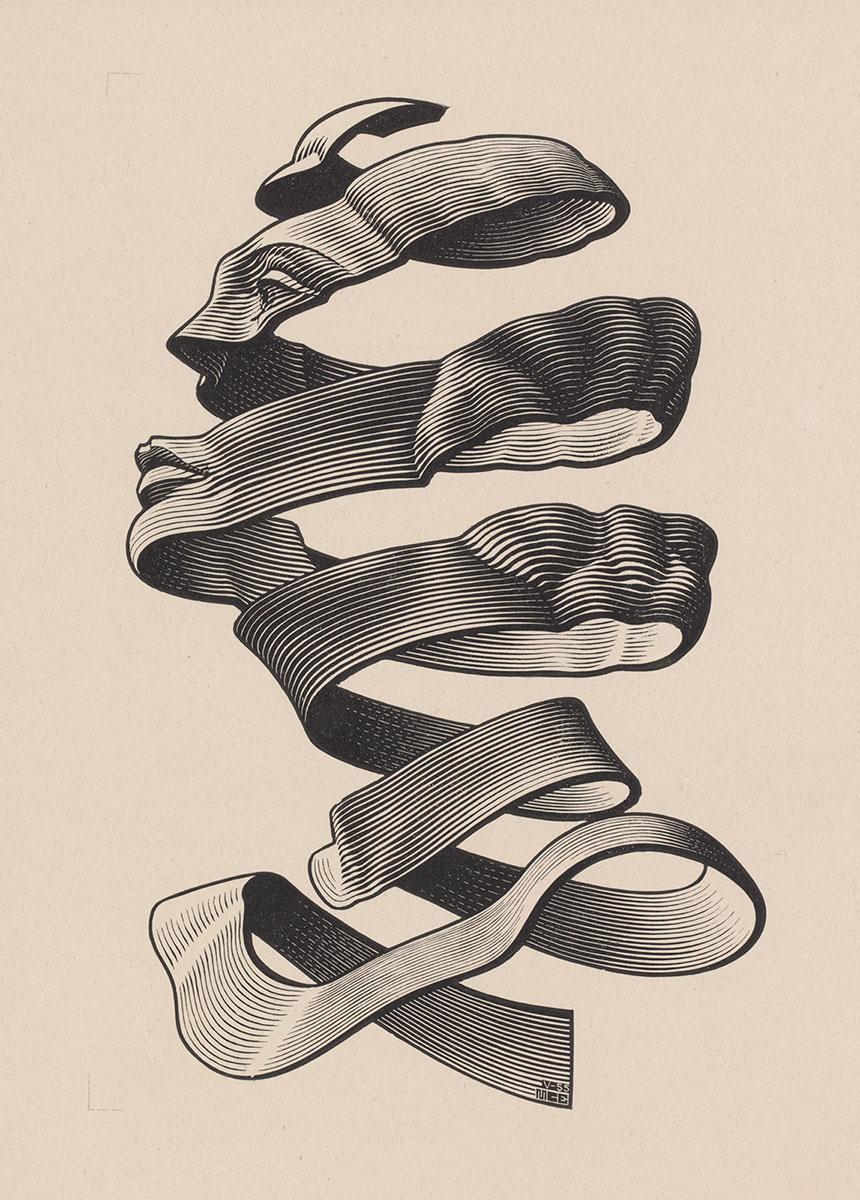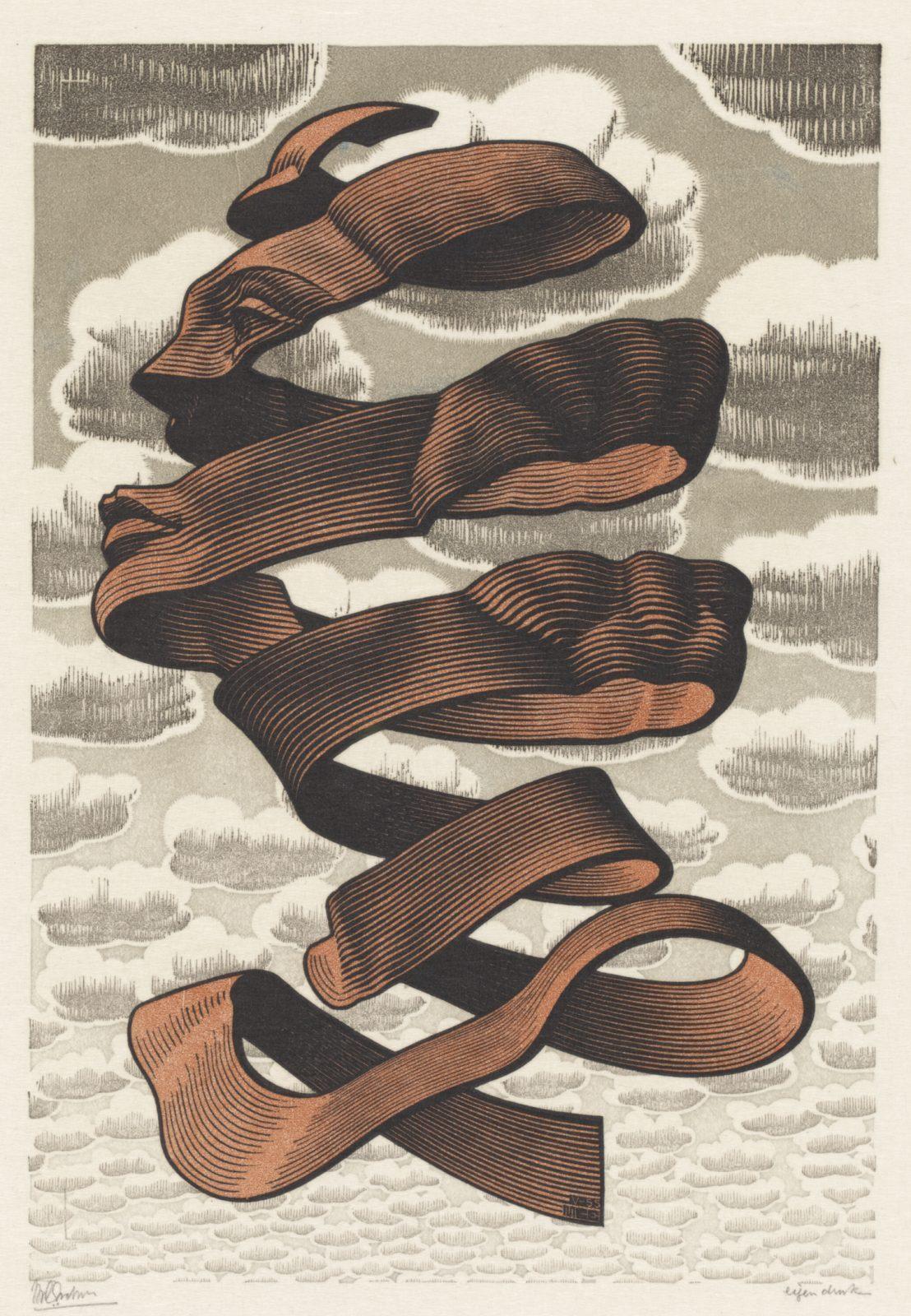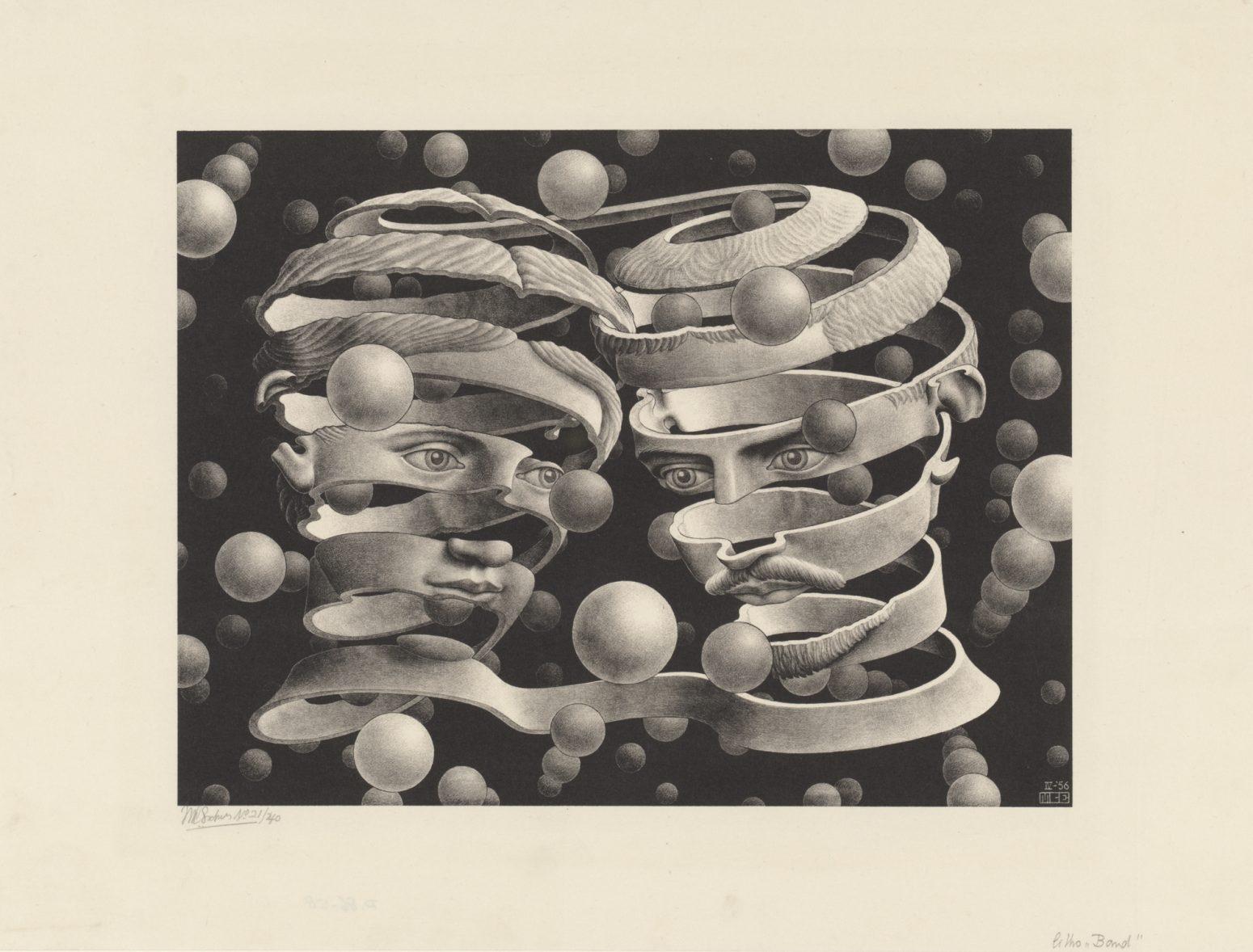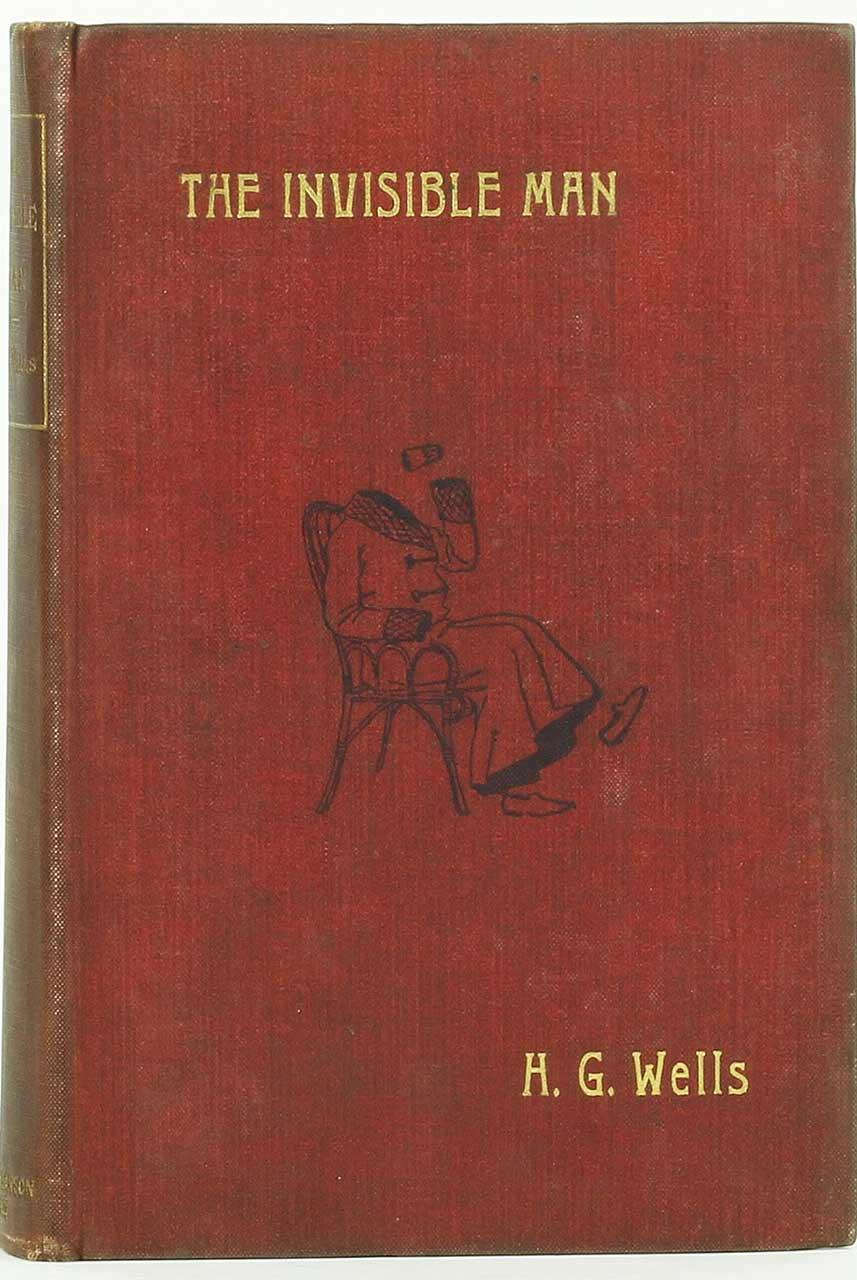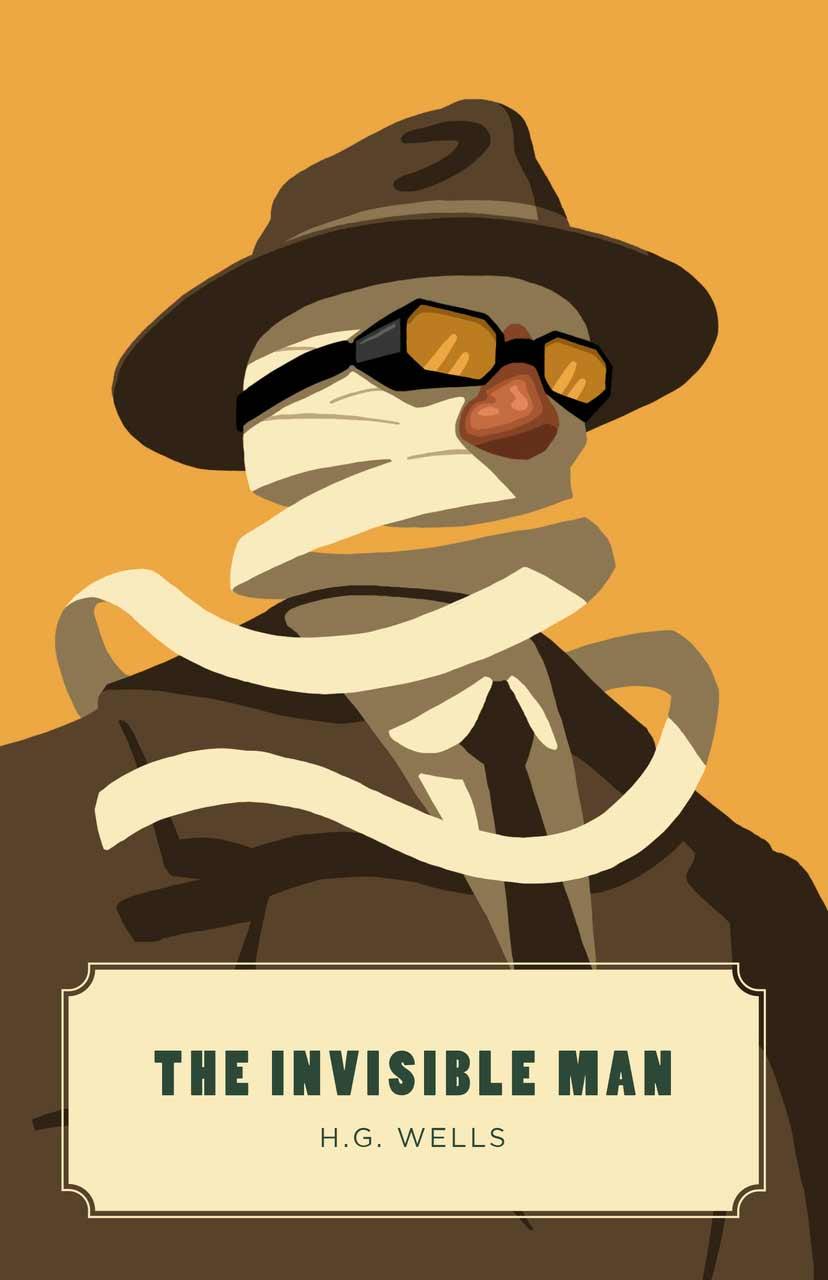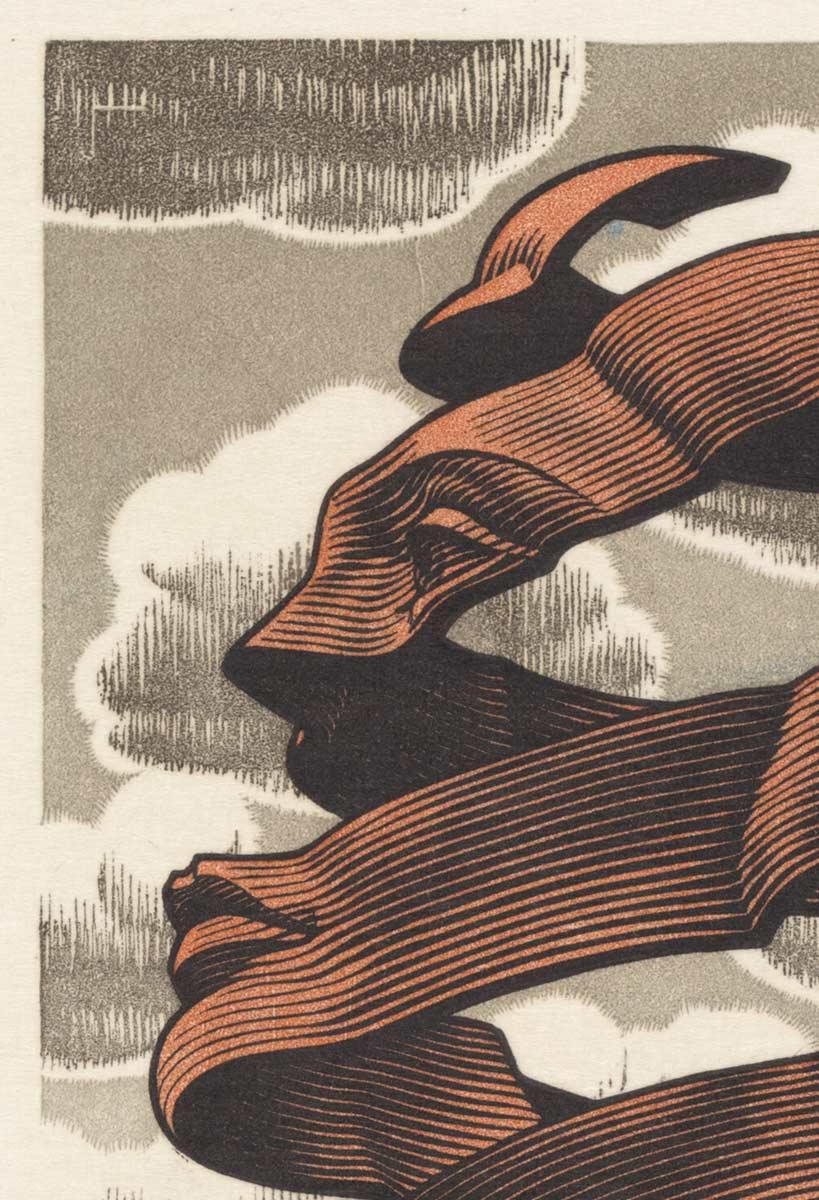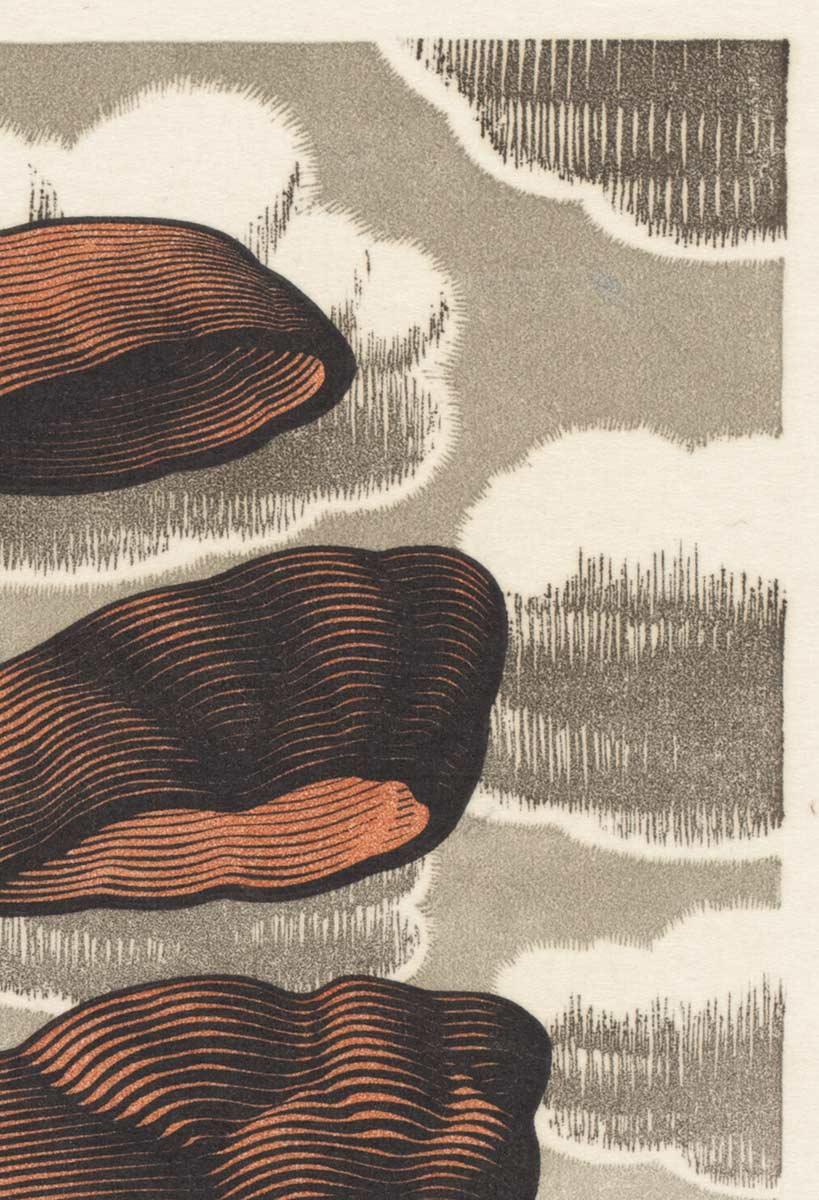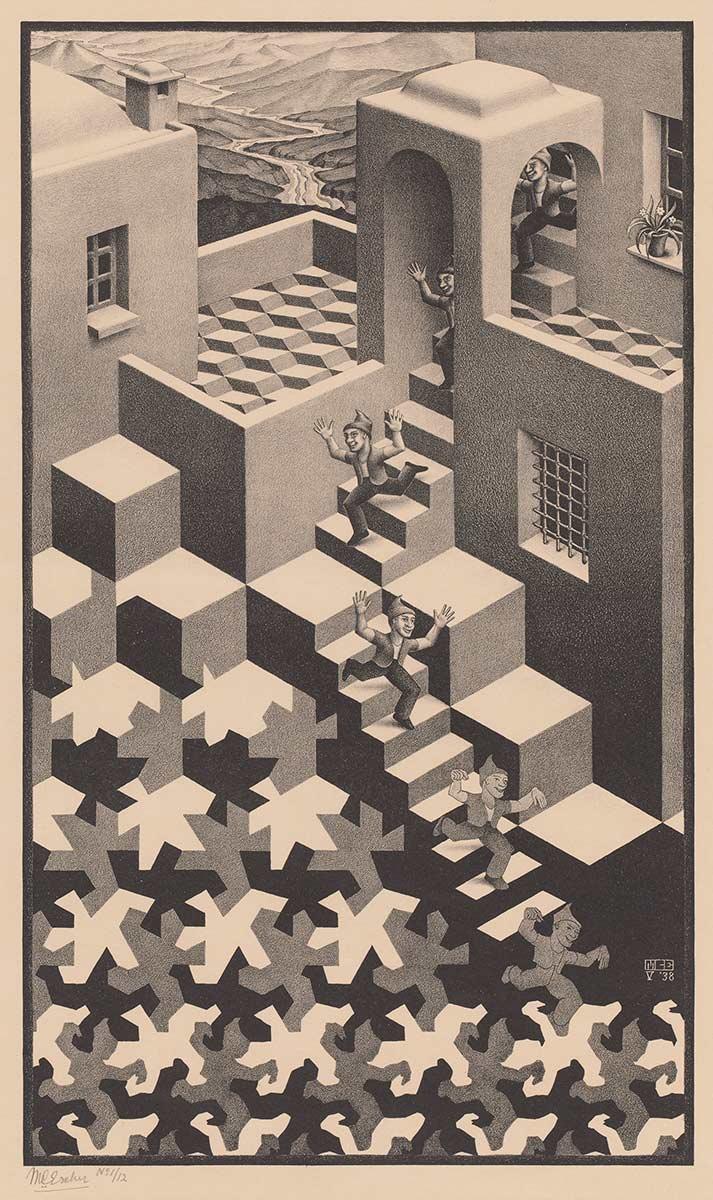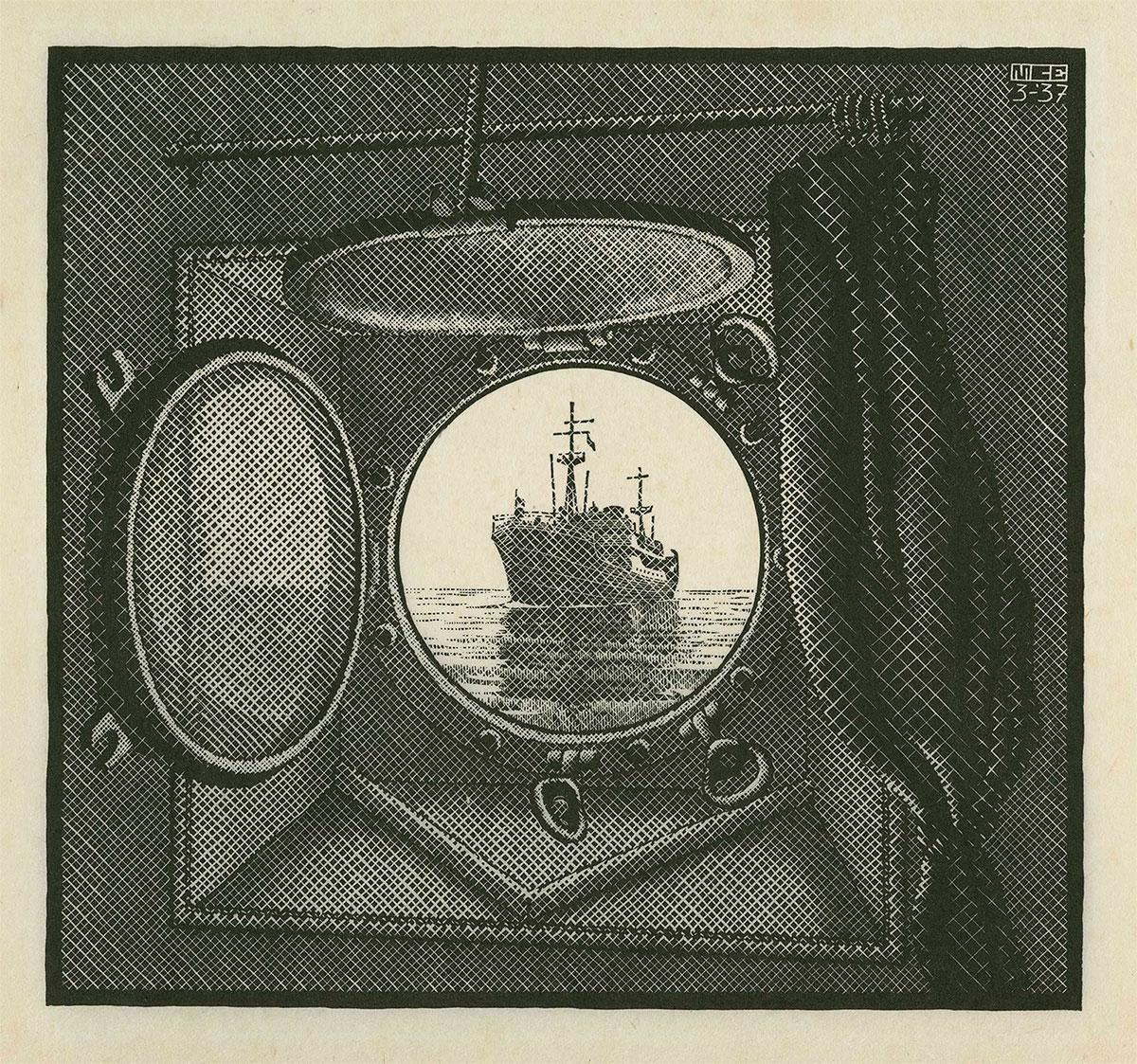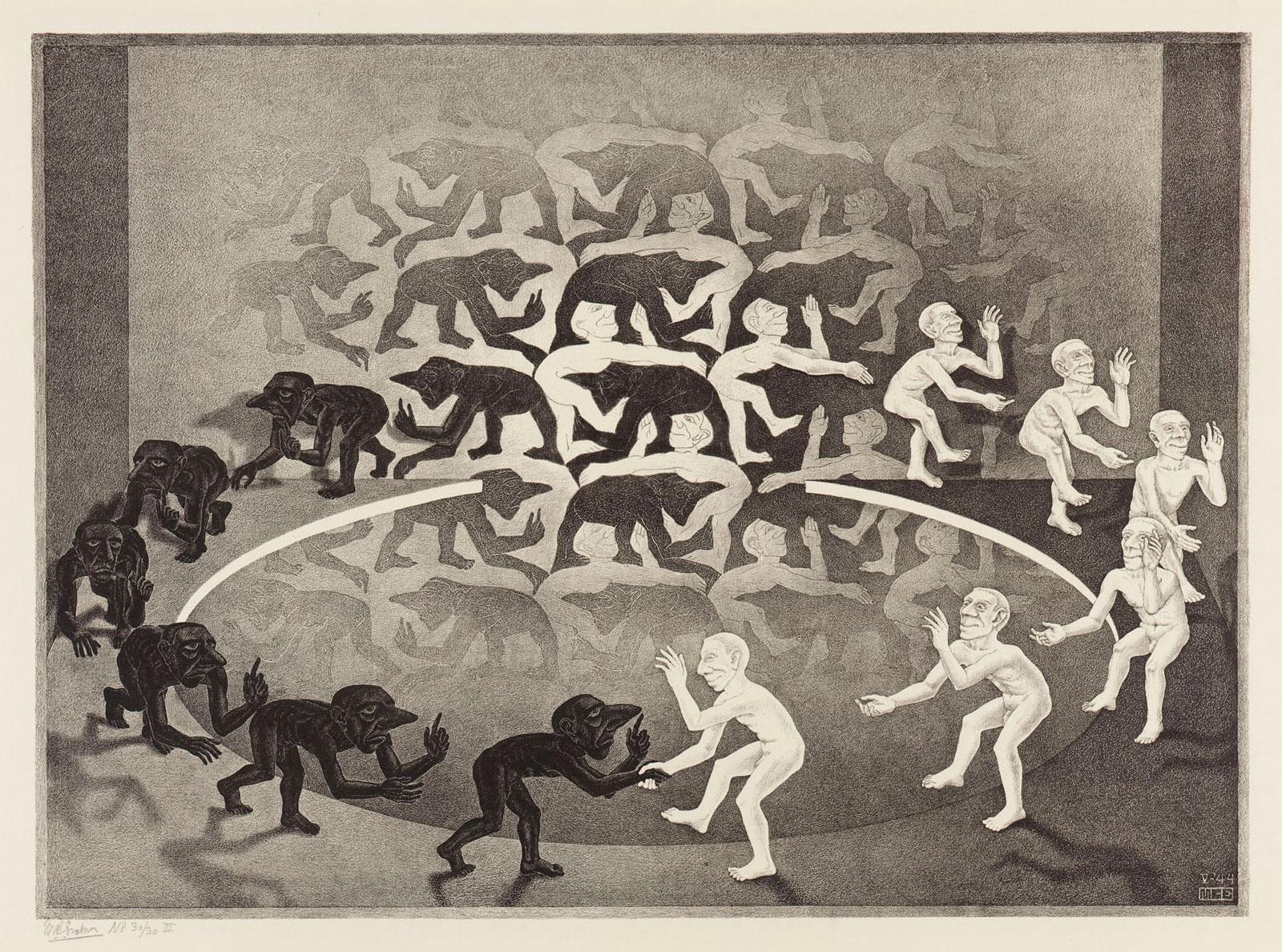
Encounter
'Out from a grey surface of a back wall there develops a complicated pattern of white and black humanoid figures. And since people who desire to live need at least a floor to walk on, a floor has been designed for them, with a circular gap in the middle so that as much as possible can still be seen on the back wall. In this way they are forced not only to walk in a ring, but also to meet each other in the foreground: a white optimist and a black pessimist shaking hands with one another.'

